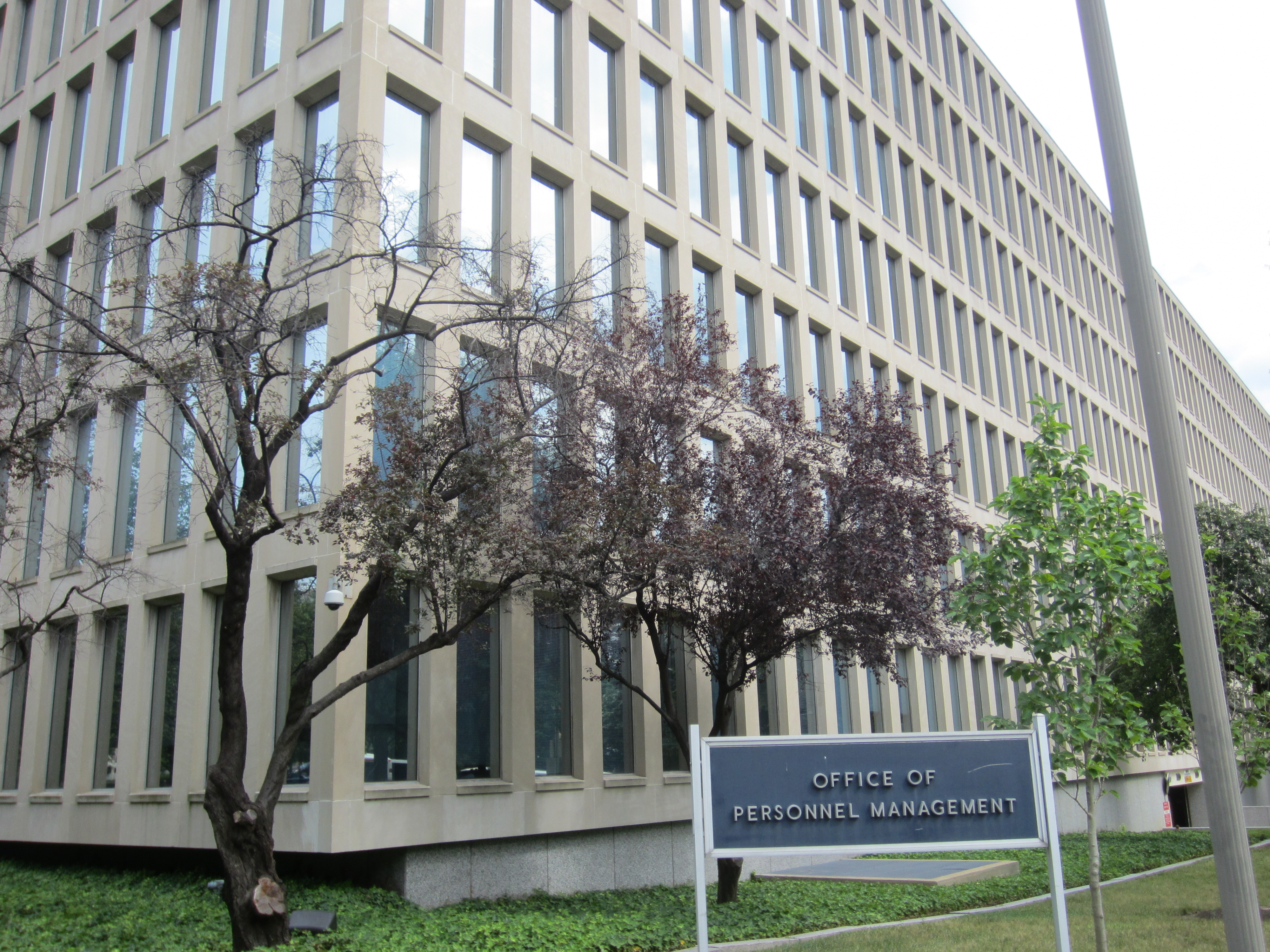A Primer on the Senior Executive Service

Published by The Lawfare Institute
in Cooperation With

In March, Liz Oyer—the Department of Justice’s pardon attorney—was fired after refusing to reinstate actor Mel Gibson’s gun rights. Her termination letter listed “Article II of the Constitution and the laws of the United States” as the sole reason for her removal. Oyer was a career member of the Senior Executive Service (SES) and entitled to certain tenure protections under the Civil Service Reform Act of 1978 (CSRA).
The SES is a distinct personnel system within the federal civil service. SES appointees occupy the top tier of federal management, serving directly below Senate-confirmed officials. They direct agency operations and implement high-level policy across the executive branch.
In recent filings before the Merit Systems Protection Board (MSPB), the Trump administration has argued that tenure protections for SES appointees violate Article II of the Constitution. The administration contends that these appointees are “officers” and the president therefore has the right to fire SES appointees at will—meaning they cannot be protected from removal. Extending at-will removal to SES appointees would greatly expand presidential control over the administrative state’s middle managers and encroach on the tenure protections foundational to the modern civil service system.
The Senior Executive Service
Prior to the passage of the CSRA, the civil service laws grouped senior managers and rank-and-file employees within the same personnel system. President Carter expressed concern that these managers “lack[ed] the incentives for first-rate performance that managers in private industry have.” As a solution, Congress designed the Senior Executive Service to professionalize upper-level federal management. The SES established a flexible corps of high-level executives tasked with leading programs, implementing policy, and ensuring continuity across administrations. To attract talented leaders, SES appointees receive elevated base pay and performance incentives. Today, the federal government employs over 8,000 SES appointees.
The appointment and tenure structure for SES positions differs significantly from that of the competitive service (i.e., the personnel system covering most federal employees). Every SES position is classified as either a career reserved position or a general position. As the name suggests, career reserved positions must be filled by career appointees and are designated for roles requiring impartiality, such as in adjudication, procurement, or law enforcement. Career appointees must be selected through competitive examination and obtain a certification of executive qualifications from the Office of Personnel Management’s Qualifications Review Board.
General positions—the default category—may be filled by career appointees, noncareer appointees, limited-term appointees, or limited-emergency appointees. The number of noncareer appointees (i.e., noncareer, limited-term, or limited-emergency appointees), however, may not exceed 10 percent of the total number of SES positions governmentwide. Unlike career appointees, noncareer appointees may be hired without competitive examination and certification from the Qualifications Review Board. Most noncareer appointments are political in nature and serve at the discretion of agency leadership. As of 2022, approximately 7,482 of the 8,222 SES positions were filled by career appointees. The rest were noncareer and limited-term appointees.
Tenure protections for SES appointees depend heavily on appointment type. Career appointees benefit from significant procedural safeguards, while noncareer and limited appointees serve largely at will. Congress designed this framework to preserve the impartiality and integrity of the professional civil service while maintaining flexibility and accountability in political or temporary appointments.
Noncareer appointees may be removed at will. These appointees generally cannot appeal their removal to the MSPB. Limited-term and limited-emergency appointees who were career employees prior to their SES appointments enjoy “fallback rights”—meaning that SES employees may be entitled to placement in their former positions.
Career appointees receive greater protections than noncareer appointees, but the strength of these protections depends on whether the appointee has probationary status. Upon their initial appointment to the SES, career appointees must complete a one-year probationary period. Career appointees removed during their probationary period are entitled to placement in a civil service position so long as they were not removed for reasons of misconduct, neglect of duty, or malfeasance. Probationary employees, however, may not appeal the removal to the MSPB.
For career appointees who have completed their probationary period, the rights available upon removal depend on the cause of the action. Those removed for performance reasons have fallback rights to placement in a GS-15 position and are entitled to an informal hearing before the MSPB, but they do not have the right to a formal MSPB appeal. By contrast, those removed for misconduct or other disciplinary reasons may formally appeal to the MSPB but are not entitled to fallback rights.
SES positions often carry significant influence over agency policy, making them potential targets for politically motivated removals or reassignments. To guard against such actions, the CSRA bars the removal of a career SES appointee for 120 days after the appointment of a new agency head or a new noncareer supervisor who has authority to direct the appointee or issue performance appraisals. This restriction applies to both performance- and misconduct-based removals unless certain exceptions apply, such as national security risks, preexisting unsatisfactory ratings, or criminal misconduct.
The Threat to the SES
As with many other personnel issues, the Trump administration has argued for an expansive interpretation of Article II that would allow the president to remove all SES appointees at will. Central to this debate is unitary executive theory and the assertion of the president’s power to remove officers of the United States. It also raises questions about the proper classification of SES appointees in the constitutional framework.
Article II of the Constitution vests the “executive power” in the president and directs the president to “take care” that the laws be faithfully executed. Proponents of unitary executive theory contend that these provisions require the president to possess sufficient authority to supervise subordinate executive-branch officials, including the implied power to remove them. In Myers v. United States, Chief Justice William Howard Taft—himself once president—said, “The power to remove is incident to the power of appointment ... and when the grant of the executive power is enforced by the express mandate to take care that the laws be faithfully executed, it emphasizes the necessity for including within the executive power as conferred the exclusive power of removal.”
The removal power, however, has been subject to various exceptions depending on whether the individual in question is classified as a “principal officer,” an “inferior officer,” or a “mere employee.” The Supreme Court distinguishes “officers” from “employees” based on whether the individual exercises “significant authority pursuant to the laws of the United States.” Within the two categories of officers, principal officers must be appointed by the president with advice and consent of the Senate. Inferior officers, however, may be appointed by the president, the courts, or the heads of departments. The Supreme Court recently affirmed inUnited States v. Arthrex that inferior officers must be “directed and supervised at some level by others who were appointed by Presidential nomination within the advice and consent of the Senate.”
Congress’s ability to insulate officers from presidential removal turns on whether the officers are classified as principal or inferior. Historically, the Supreme Court has allowed Congress to restrict the president’s ability to remove principal officers in some situations. In Humphrey’s Executor v. United States, the Supreme Court allowed Congress to restrict the removal of principal officers within independent agencies for cause. In Wiener v. United States, the Supreme Court decided that principal officers in an adjudicatory agency enjoyed implicit removal protections—even though the statute creating their positions did formally restrict their positions. But the Supreme Court has chipped away at removal protections for principal officers in a series of cases over the past decade. In the latest such case, Trump v. Wilcox, the Supreme Court signaled that it is likely to prohibit restrictions on removal, at least with respect to some principal officers—such as members of the National Labor Relations Board—while retaining protections for others, such as members of the Federal Reserve Board.
Even as the Supreme Court has whittled away at removal protections for principal officers, it has reaffirmed protections for inferior officers. In United States v. Perkins, the Supreme Court stated, “We have no doubt that when Congress, by law, vests the appointment of inferior officers in the heads of Departments it may limit and restrict the power of removal as it deems best for the public interest.” Chief Justice John Roberts reaffirmed this principle in Seila Law LLC v. Consumer Financial Protection Bureau, citing Perkins for the proposition that Congress could restrict removal of “inferior officers with limited duties and no policymaking or administrative authority.” Although the Supreme Court’s dicta suggested that removal protections for inferior officers who exercise “policymaking or administrative authority” would be unconstitutional, it has never invalidated tenure protections on the basis that an inferior officer exercises too much authority. Instead, the Supreme Court has remedied problems with inferior officers by requiring the head of their department to be able to review the decisions of these officers.
In four cases before the Merit Systems Protection Board, the Justice Department has argued that the tenure protections for members of the SES violate Article II. These cases involve the removal of career SES appointees within the U.S. Trustee Program, the Organized Crime Drug Enforcement Task Forces, the Office of Information Policy, and the Office of the Pardon Attorney. In Tara Twomey v. Department of Justice, for example, the Justice Department conceded that Twomey, the former director of the U.S. Trustee Program, was appointed as a career SES appointee. Nevertheless, the department argued that the president has constitutional authority to remove SES appointees. In its brief, the Justice Department argued, “Article II of the Constitution allows the President and heads of departments exercising his power to remove inferior officers without cause, subject to only narrow exceptions that do not apply to Appellant’s former position.”
The Justice Department made several arguments to justify why Article II must extend to SES appointees. First, SES appointees exercise “significant authority” because they are tasked with “direct[ing] the work of an organizational unit” and “ensur[ing] that the executive management of the Government is responsive to the needs, policies, and goals of the Nation.” Accordingly, SES appointees are inferior officers according to the Justice Department. Second, SES appointees’ duties “exceed the bounds of the exception for certain inferior officers who perform limited duties.” The department latched onto language in Morrison v. Olson suggesting that the Perkins exception applies only to inferior officers who lack “policymaking or significant administrative authority.” It did so, however, without explicitly citing Perkins.
The Supreme Court has never struck down removal protections for an inferior officer on the basis that the officer exercised too much authority. Indeed, Morrison itself upheld removal protections for the independent counsel despite her substantial authority. And in Arthrex, when the Court was asked to strike the removal protections of the relevant officers, it declined and instead—and some might say more awkwardly—ensured a right of review of those officials’ decisions by their supervisor.
The Office of Personnel Management (OPM) advanced an even more aggressive stance in its brief. OPM broadly argued that “[f]or-cause removal protections for civil service employees—as defined by the Legislature and applied by the [MSPB]—cannot limit the President’s Article II power to execute the law.” Like the Justice Department, OPM took the position that the director of the U.S. Trustee Program is an inferior officer. But rather than focus on the scope of the exception for “inferior officers,” OPM pressed a broad claim: that inferior officers must be subject to at-will removal. In effect, OPM has asked the courts to invalidate any statutory provision that restricts the president’s ability to remove inferior officers.
The Stakes
The current dispute over the SES raises three central questions about the federal personnel system. First, should SES appointees be classified as inferior officers or as “mere” employees? Many SES appointees undeniably exercise greater authority than rank-and-file employees in the competitive or excepted service. The Justice Department and OPM contend that SES appointees are inferior officers, while Twomey maintains that she was a Justice Department employee entitled to due process protections. This classification issue, in turn, raises further methodological concerns about the standard that the MSPB and courts should apply to decide this question. Should adjudicators evaluate the specific duties of each SES appointee on a case-by-case basis? Or should all SES appointees be deemed inferior officers by virtue of their position in that personnel system?
Second, what authority does Congress have to shield inferior officers from removal? In both Morrison and Seila, the Supreme Court suggested—albeit in dicta—that inferior officers who exercise “policymaking or administrative authority” may be removable at will. One wonders, though, if this language is really an attempt to separate inferior officers into two categories or if this is instead closer to the usual test for distinguishing who is a principal officer and who is an inferior officer. If it is the former and this language reflects a genuine distinction among types of inferior officers, how should courts determine the level of authority that triggers at-will removal? And is at-will removal the only remedy, or could their authority simply be limited by their supervisor’s right to review and override their decisions?
Third, what would be the consequences of expanding the removal power to cover inferior officers? Adopting the broadest possible definition of “inferior officer” could sweep in much of the civil service, effectively stripping statutory tenure protections from career officials across the government. Such a holding would destabilize the federal personnel system, eroding long-standing safeguards for nonpartisan expertise and undermining continuity in government operations. The implications of these cases therefore reach far beyond the SES, threatening the very foundation of the civil service. A narrower approach, however, could confine at-will removal to only those SES officials and other employees who exercise substantial policymaking or administrative authority, leaving intact protections for most career executives and limiting the disruption to the broader civil service system. A final approach might be for a court to conclude that the remedy is not to scrap removal protections but instead to insert the possibility of review by one’s supervisor in every decision made by these officials. But even with the more modest approaches, such a holding would mark a considerable expansion of presidential authority over midlevel employees.
The dispute over the SES raises questions that reach well beyond a single personnel system. At its core, the litigation asks how far Article II extends into the ranks of career officials and what role Congress may play in preserving a professional, nonpartisan civil service. However the courts resolve these issues, their decisions will shape the balance between presidential control and congressional design, with consequences for both the effective administration of government and the constitutional framework that supports it.



.jpg?sfvrsn=8b09cc66_5)


